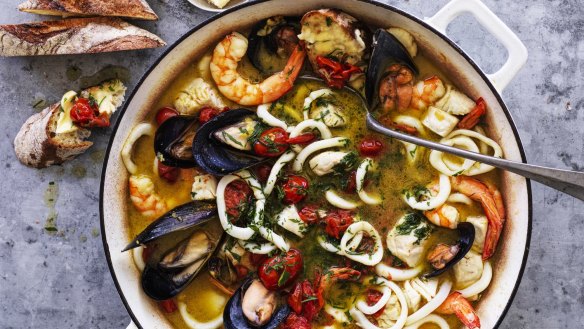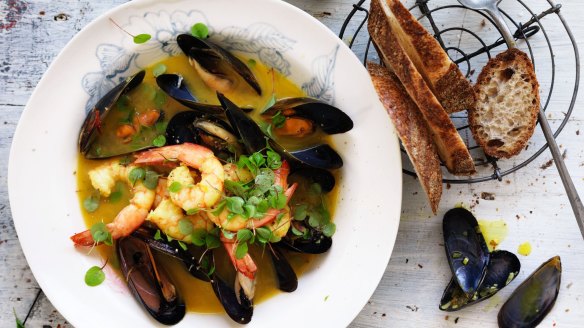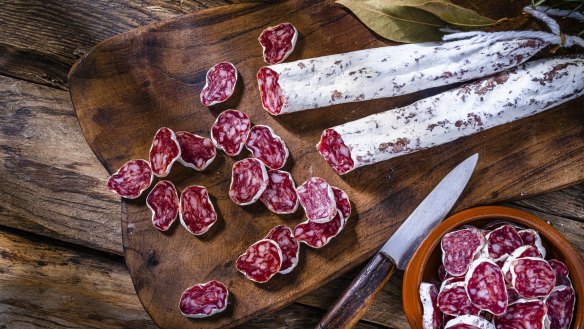Why some mussels are orange and others are white

Why are mussels different colours? M. Farrer
The orange ones are ladies, and the white ones are gentlemen. There is no difference in flavour.
- Discard any mussels with broken shells.
- If mussels are gaping, they have been out of the water too long.
- Give them a tap, and if they close, they're OK.
- If they don't, they are likely dead. I put these in the compost.
Some mussels have had their beard removed by machine. The beard is made of filaments that attach mussels to whatever they are growing on.
If the beards haven't been removed, grab the fibres between thumb and forefinger and pull them towards the pointy end of the shell and discard them.

While I love putting the mussels in a wide pot with chopped fennel, olive oil, white wine and a little saffron, then cooking for a few minutes just until the shells open up, there is something to be said for deep-fried mussels.
- Remove the raw mussel from the shell by placing a sturdy knife between the shells.
- Twist to open, then use a sharp knife to cut through the adductor muscle.
- Dip in a tempura or chickpea flour batter, fry in hot oil for a few minutes, and serve with aioli.

Is the white mould on the outside of salami safe to eat? L. Burrowes
When I was growing up, mum used to buy "Hungarian salami" in a white plastic casing.
This was an affectation by the manufacturer to emulate the white mould that develops on the exterior of fermented sausages made with natural skin casings.
Salami makers add cultures to minced meat when they make fermented sausages. Lactic acid bacteria turn sugars in the meat into lactic acid, which stops bad bugs from breeding up.
Some salami makers add Penicillium moulds that grow outside the skin. They breed up and form a white coating that stops dangerous moulds from colonising the skin.
Some manufacturers use Penicillium camemberti, the same mould used to make camembert, which gives the salami a mushroomy note.
To serve salami, or any fermented sausage, remove the skin from as much of the sausage as you need, discard, and cut the sausage into thin slices.
Cover the cut end with greaseproof paper and wrap tightly. While the skin, and hence the mould, are not intended to be eaten, they are safe to consume.
Letters
Recently we discussed makrut lime, formerly known as kaffir. J. Harris has a tree and wrote, "When almost all my makrut limes fell from the tree in a cold snap, I zested them all and layered the zest on greaseproof paper in a container and froze it straight away. The results are as good and zingy as fresh from the tree."
B. Lewis wanted to know when a recipe calls for a makrut lime leaf, does one use the whole leaf or one of the segments, as the leaf has an unusual hourglass shape. Use the entire leaf, B. Lewis, and enjoy the heady aroma.
Send your culinary conundrums and ingredient suggestions to brainfood@richardcornish.com.au or Twitter and Insta @foodcornish.
Appears in these collections
- More:
- Food
- Brain food
From our partners
Original URL: https://www.brisbanetimes.com.au/goodfood/why-some-mussels-are-orange-and-others-are-white-20220801-h25fm2.html
